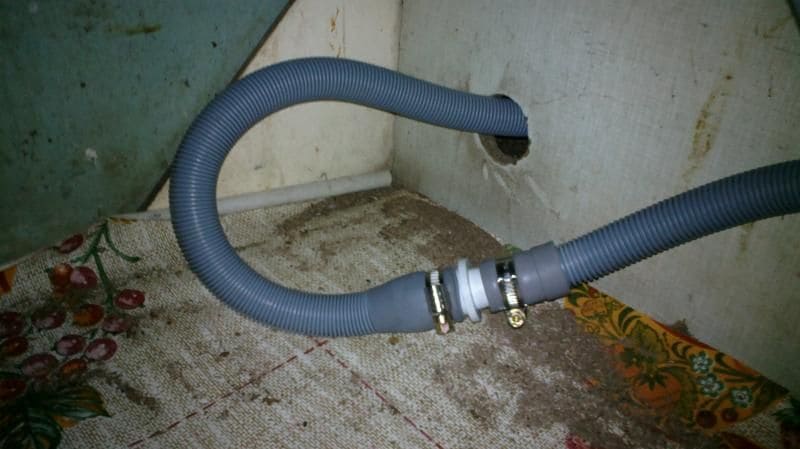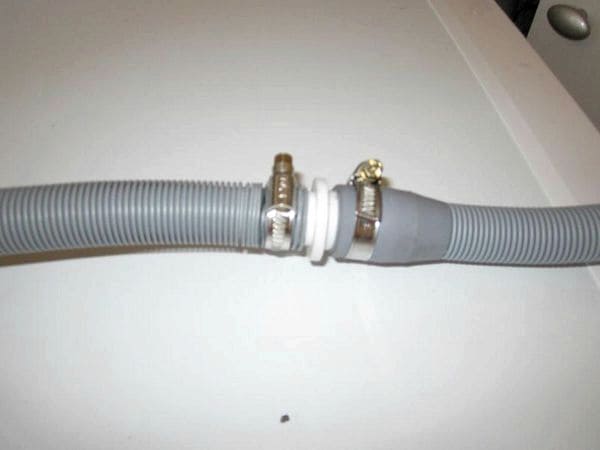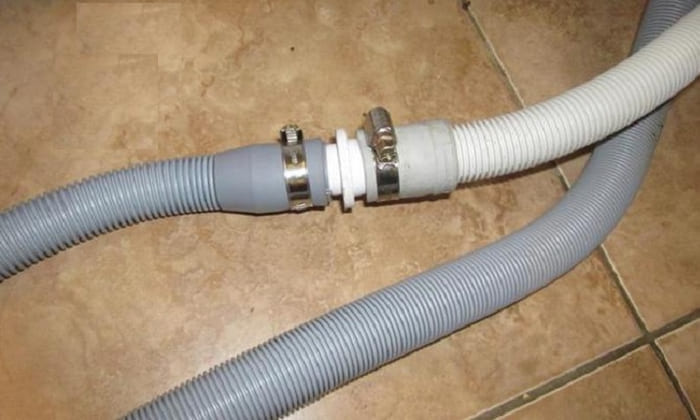 Drain hose in a washing machine designed to drain dirty liquid. The design is simple - a corrugated pipe made of polypropylene material, one end connected to the pump, the other to the sewer system. Inside the machine, the element is attached to its body part. It is easy to shorten the washing machine hose if necessary.
Drain hose in a washing machine designed to drain dirty liquid. The design is simple - a corrugated pipe made of polypropylene material, one end connected to the pump, the other to the sewer system. Inside the machine, the element is attached to its body part. It is easy to shorten the washing machine hose if necessary.
Regular pruning
According to many owners washing machines, the most correct and easiest option for shortening the length of the hose is banal trimming. This could be possible if the ends of the drain element did not have special plastic tips, with the help of which a reliable connection is made to the fitting, tee or to the sewer drain pipe. If the tip is removed by cutting off the excess length, you will lose the opportunity to have additional protection with gaskets and clamps.
In the event that you do not consider such a moment important, because you simply insert the sleeve into the toilet or sink, there is no point in preserving the tip. To shorten the drain hose, proceed as follows:
- turn off the tap, supplying cold water;
- disconnect the washing machine from the electrical network;
- remove the drain hose;
- measure the required length, make a mark;
- Using a sharp blade, separate the piece that you think is superfluous in order to shorten the sleeve to the desired length.

How else can I shorten the drain hose?
The proposed option of adjusting the hose to the required length is not suitable for every user. If a standard connection of the drain to the sewer network is made using a siphon or tee, the tips provided by the manufacturer must be retained. In such a situation, the length of the hose is reduced in another way:
- the sleeve is detached from the washing machine;
- The distance is measured from the drain hole on the body of the machine to the connection point to the sewer pipe. Proceed carefully to avoid tension on the hose;
- the drain hose is cut into two halves;
- from one of them the part corresponding to the excess piece is cut off;
- We remove the connector, which is an adapter made of plastic material. You can purchase it at any store that sells washing machines and spare parts for them. The cost of the element is thirty to eighty Russian rubles;
- pieces of hose are pulled alternately onto the connecting element;
- fixation is performed with silicone, electrical tape or clamps.
The element, adjusted to the required length, is connected to washing machine, household appliances undergo trial testing. If a leak is detected, the connections must be checked.

How to lengthen?
Standard hose sizes are one and a half to two meters. There is an original way to increase them - purchase an element of suitable length and replace it. The task is made easier by the fact that stores have options that differ in different lengths. To perform the replacement you will have to perform partial disassembly of the washing machine.
If you don’t want to tinker for a long time, use a simpler method of extending the hose by adding a purchased hose of suitable length to the old element. The connection is made with special clamps.
By the way, it is allowed not to use clamps if the drain elements are connected tightly using a special adapter. The process is simple - pieces of hose are pulled tightly onto its ends and secured with clamps for insurance. If there is no suitable element for connection, you can use thin plastic tubes with a diameter suitable for the cross-section of the hose. The drain hoses are stretched so that their junction is in the middle of the tube, and fastening clamps are installed. For your washing machine to function normally, the length of the drain element should not exceed three and a half meters.
If possible, move the washing machine closer to the water intake point and sewer system. You can invite a plumber to move the place connecting the drain hose closer to the washing machine. If the sewage system in your apartment is made of plastic pipes, then you can easily do this kind of work on your own.

Conclusion
Changing sleeve lengths In a unit for washing clothes, shortening is sometimes considered the only way to optimize the operation of household appliances. But if you are expanding components, prepare for possible problems associated with the formation of additional load on the equipment and leaks.
The best solution is to use the optimal sizes of water intake and drain hoses, which can be purchased at a store that sells household appliances and all the accessories necessary for them.









